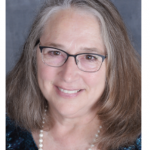The Emerging Role for Statisticians and Data Scientists in Community Analytics
I was one of the keynote speakers because of my work in community analytics. As we head into the hot summer days (Remember, I am in Houston!) and prepare for JSM, I thought it would be a good time to discuss the general area of community analytics and the role the ASA community of statistics professionals might play in its growth.
Let me begin my story with my working definition of community analytics: bringing the best of statistical science—in collaboration with municipal governments, universities, local businesses, NGOs, and community organizations—to improve lives through a better understanding of our communities and how we live, work, learn, and play.
I found my way to this topic through environmental science and a rigorous effort to understand and mitigate the impact of the complex Houston air quality profile on human health. This work put me in strong connection with municipal leaders who were interested in creating a vibrant data- and analytic-rich city infrastructure to proactively address the challenges faced by Houstonians.
My key collaborator, Loren Hopkins, holds a joint position between Rice University and the City of Houston Health Department. Our work with air quality in Houston has had many real endpoints, but one of particular note is an alert system managed through the Houston Health Department that identifies those days when asthmatic patients need to be on high alert to protect their health. Working with officials in the Houston Independent School District, we were able to dramatically improve asthma management for the city’s children.
It is extremely rewarding when one’s work, driven by the best science, has a strong human impact. I was hooked! So much so that I joined Hopkins again to establish the City of Houston wastewater epidemiology program. This program was a key source of information for our community and government leaders throughout the pandemic, and it continues to have an impact.
Houston is not unique in its interest in establishing a data- and analytic-rich culture. State and municipal governments are adding positions comparable to chief data officers to help with the transition to a data-informed environment. For example, Jeanne Holm, deputy mayor for budget and innovation for the City of Los Angeles, brings forward this vision, as well.
Stepping up to the national level, it is important to note the role of the US Centers for Disease Control and Prevention in promoting community health analytics, both in their leadership and as a source of funding for local partnerships. Karen DeSalvo, chief health officer for Google, served as the national coordinator for health information technology and assistant secretary for health in the Obama administration. She co-authored an article for CDC titled “Public Health 3.0: A Call to Action for Public Health to Meet the Challenges of the 21st Century” that promotes a “new Public Health 3.0 model in which leaders serve as Chief Health Strategists, partnering across multiple sectors and leveraging data and resources to address social, environmental, and economic conditions that affect health and health equity.”
Members of the ASA community are also leading important efforts. Stephanie Shipp and former ASA President Sallie Keller have promoted a similar vision for rural America through the social and decision analytics division within the University of Virginia Biocomplexity Institute. And while at the Urban Institute, 2021 ASA President Rob Santos also advanced these ideals.
Many centers and institutes have been established that promote university/municipal government partnerships, such as the Kinder Institute at Rice. Through the latter, I led the development of the Urban Data Platform, a data repository and secure computing environment serving as the leading source of curated and published geo-temporal-referenced information for the greater Houston area. I like to think of the platform as a “one-stop shop” for curated, research-ready data to address community-based questions.
From a university perspective, partnering with local governments on shared challenges is not simple. An excellent set of summary points is put forward in an opinion piece, “4 Steps to Successful City-University Partnerships,” highlighting the partnership between Austin, Texas, and the University of Texas. Readers might also appreciate comments by Henry Webber in “Building Effective City-University Partnerships: Lessons from the Heartland.” Many of our students move to front-line positions in community analytics, and society benefits greatly from these partnerships.
The National Academies of Science, Engineering, and Medicine have advanced the topic of community analytics. For example, I was part of developing the Frontiers of Big Data, Modeling, and Simulation in Urban Sustainability Workshop and follow-up webinars by leaders in community analytics. The National Academies will continue this conversation over the summer with a series of workshops examining multi-endpoint decision-making for sustainable cities.
Within the ASA statistics community, we have many members who address issues related to effective partnerships. The 2021 ASA Statistical Partnerships Among Academe, Industry, and Government Award went to the CMU/CDC lead group DELPHI: COVIDcast project for commitment to the theory and practice of epidemic tracking and forecasting through building and modeling unique health data streams. The most recent award went to Harvard and Partners In Health.
What can we do to garner strong membership interest in municipal governments and NGOs? It would be fantastic if the ASA served as the professional home for this emerging group of statisticians and data scientists. There is the Health Policy Statistics Section and recent efforts in Data for Good, but can we do more?
It might simply be opening our doors and showing the strong value proposition of the ASA. I see value in an ASA professional development workshop on how to get started in community analytics and building collaborations to support where we each live, work, learn, and play.
Please share your ideas with me by leaving a comment below. I welcome input from chapter and section members who would like to expand the Big Tent for Statistics and Data Science to include more statisticians and data scientists on the front lines of improving our communities.


















